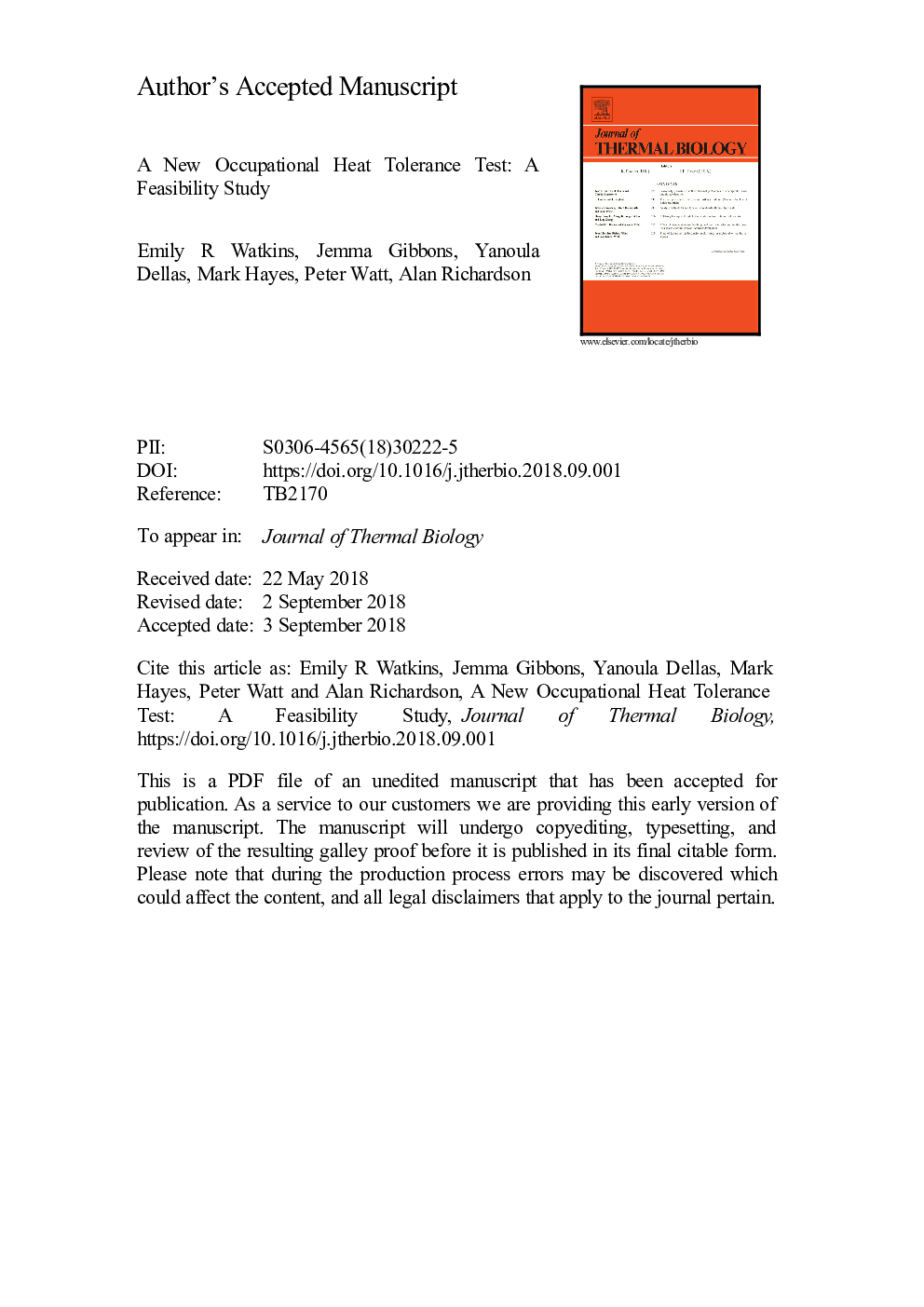| Article ID | Journal | Published Year | Pages | File Type |
|---|---|---|---|---|
| 10148532 | Journal of Thermal Biology | 2018 | 32 Pages |
Abstract
Heat tolerance tests identify those susceptible to heat illnesses and monitor heat adaptations. Currently, tolerance tests do not replicate the uncompensable heat strain environments experienced in some occupations. In addition, tests can take up to 2â¯h to complete, and cannot offer intra and inter individual comparisons, due to the use of a fixed exercise intensity. This study aimed to assess the validity and reliability of a new heat occupational tolerance test (HOTT: 40â¯min at 6â¯Wâ¯kgâ1 metabolic heat production, 50â¯Â°C 10% RH, in protective clothing) to the standard heat tolerance test (HTT: 2â¯h walk at 5â¯kmâ¯hâ1 1% gradient, 40â¯Â°C 40% RH, in shorts and t-shirt). Eighteen participants (age: 21â¯Â±â¯3â¯yrs, body mass: 81.3â¯Â±â¯5.9â¯kg) completed trials to assess the validity and/or reliability of the HOTT. Peak rectal temperature (Tre) displayed strong agreement and low measurement error (0.19â¯Â°C) between HTT (38.7â¯Â±â¯0.4â¯Â°C) and HOTT (38.6â¯Â±â¯0.4â¯Â°C). Strong agreement was also displayed for physiological and perceptual measures between the two HOTT trials, including peak Tre (38.5â¯Â±â¯0.4â¯Â°C vs. 38.5â¯Â±â¯0.4â¯Â°C) and peak heart rate (182â¯Â±â¯20 bâ¯minâ1 vs. 182â¯Â±â¯21 bâ¯minâ1). The HOTT is the first tolerance test that assesses individuals' responses whilst wearing protective clothing in high temperatures. It can consistently identify individuals' levels of heat tolerance within a reduced time frame. In addition, it allows for participant monitoring over time and comparisons between individuals to be made. A continuum based approach is recommended when assessing individuals' responses to the HOTT.
Keywords
Related Topics
Life Sciences
Agricultural and Biological Sciences
Agricultural and Biological Sciences (General)
Authors
Emily R. Watkins, Jemma Gibbons, Yanoula Dellas, Mark Hayes, Peter Watt, Alan J. Richardson,
